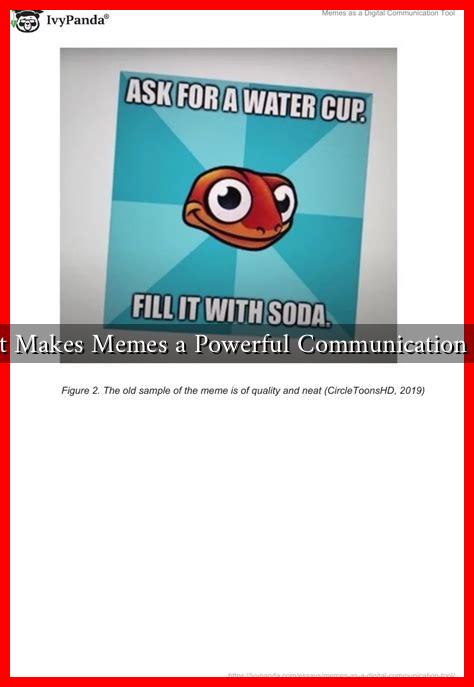-
Table of Contents
What Makes Memes a Powerful Communication Tool
In the digital age, memes have emerged as a unique form of communication that transcends traditional barriers. They are not just humorous images or videos; they are powerful tools that convey complex ideas, emotions, and social commentary in a concise and engaging manner. This article explores the elements that make memes an effective communication tool, their impact on society, and how they can be harnessed for various purposes.
The Anatomy of a Meme
At their core, memes are a blend of visual and textual elements that resonate with audiences. Understanding their structure is essential to grasping their communicative power. Here are some key components:
- Visual Appeal: Memes often use striking images or videos that capture attention quickly.
- Relatability: They often reflect shared experiences or cultural references, making them relatable to a wide audience.
- Humor: Many memes employ humor, which can disarm audiences and make messages more palatable.
- Conciseness: Memes convey messages in a few words, making them easy to digest and share.
The Psychological Impact of Memes
Memes tap into psychological principles that enhance their effectiveness as communication tools. Here are some factors that contribute to their impact:
- Social Proof: When people see others sharing a meme, they are more likely to engage with it themselves, creating a viral effect.
- Emotional Resonance: Memes often evoke strong emotions, whether it’s laughter, nostalgia, or even anger, which can lead to increased sharing and discussion.
- Cognitive Ease: The simplicity of memes allows for quick understanding, making them accessible to a broad audience.
Memes in Social Movements
Memes have played a significant role in social movements, serving as tools for activism and awareness. A notable example is the Black Lives Matter movement, where memes have been used to spread messages of justice and equality. The viral nature of memes allows for rapid dissemination of information, mobilizing support and fostering community engagement.
Another example is the #MeToo movement, where memes highlighted personal stories of sexual harassment and assault, creating a collective narrative that resonated with many individuals. These memes not only raised awareness but also encouraged conversations around sensitive topics that might otherwise be avoided.
Memes in Marketing and Branding
Businesses have recognized the potential of memes as a marketing tool. Brands like Wendy’s and Netflix have successfully integrated memes into their social media strategies, engaging younger audiences and enhancing brand loyalty. Here’s how memes can be effectively used in marketing:
- Engagement: Memes encourage interaction, prompting users to comment, share, and create their own versions.
- Brand Personality: Memes can help humanize a brand, making it more relatable and approachable.
- Cost-Effective: Creating and sharing memes is often less expensive than traditional advertising methods.
Challenges and Misuse of Memes
Despite their advantages, memes can also be misused. Misinformation can spread rapidly through memes, leading to confusion and polarization. For instance, during the COVID-19 pandemic, numerous memes circulated that contained false information about the virus and its prevention. This highlights the need for critical thinking and media literacy when engaging with memes.
Conclusion
Memes have evolved into a powerful communication tool that can convey complex ideas, foster social movements, and enhance marketing strategies. Their visual appeal, relatability, and emotional resonance make them effective in capturing attention and sparking conversations. However, as with any form of communication, it is essential to approach memes critically to avoid the pitfalls of misinformation. As we continue to navigate the digital landscape, understanding the power of memes will be crucial for effective communication in various contexts.

